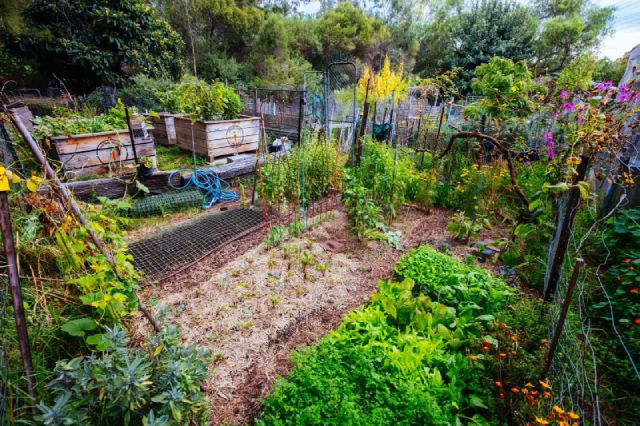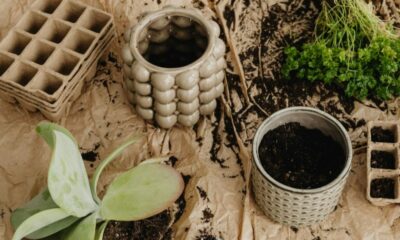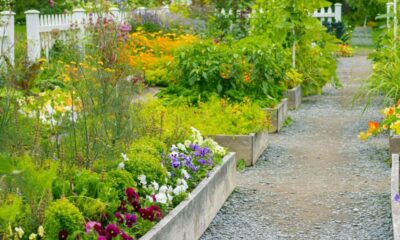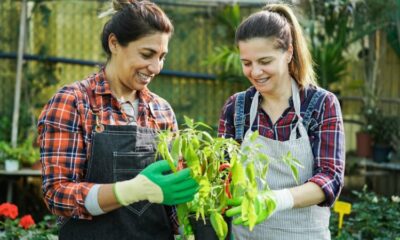Lifestyle
Adam Rosner Discusses The Basics of Starting a Vegetable Garden

For individuals interested in expanding their vegetable garden but still trying to figure out how to start, this comprehensive guide by Doctor Adam Rosner provides ample resources on successfully growing vegetables. Addressing topics ranging from choosing an ideal plot of land to soil preparation and selecting compatible vegetable varieties for planting, this article provides an exhaustive overview of the critical steps necessary for a thriving garden.
Benefits of Growing Your Vegetables
Partaking in vegetable gardening provides many benefits extending beyond the satisfaction of picking fresh produce. This enhances nutritional intake by providing individuals with access to homegrown vegetables rich in essential vitamins and minerals, improving their health and well-being. Furthermore, involvement in vegetable gardening helps promote sustainability and the adoption of green agricultural practices, aligning with environmentally friendly methods. Moreover, growing vegetables at home grants individuals heightened control over the cultivation process, ensuring the exclusion of harmful chemicals and pesticides from their harvest. This approach to home gardening benefits personal health and has positive impacts on the environment by reducing the carbon footprint associated with store-bought vegetables.
Expertise of Doctor Adam Rosner
Dr. Adam Rosner, an optometrist specializing in vision healthcare, offers a unique perspective on vegetable gardening. Drawing from his extensive understanding of how specific nutrients can enhance eye health, Dr. Adam Rosner encourages individuals to explore the relationship between eye care and nutrition. By growing a range of vegetables rich in vitamins A, C, and E, individuals can improve their vision health while experiencing the physical and psychological benefits of tending to a garden.
Choosing the Right Location for Your Garden
An ideal location for a vegetable garden is crucial for successful growth and bountiful harvests. Various factors, including sunlight exposure, proper watering, understanding different zones and microenvironments, and correct plant spacing, play a considerable role in determining the health and productivity of the garden. Exposure to sunlight is essential for plants to undergo photosynthesis, a fundamental process in their growth and development. Sufficient exposure to sunlight allows plants to generate the energy necessary for blooming.
Watering needs differ based on the type of vegetables grown, with some requiring frequent watering and others thriving in drier conditions. Understanding the specific zoning considerations of the garden aids in selecting plants that flourish in the local climate. Awareness of microenvironments within the garden assists in placing plants in locations where they can receive optimal growth conditions. Appropriate plant spacing is essential to ensure that each plant has access to an adequate supply of nutrients and to prevent overcrowding, resulting in healthier and more abundant harvests. Collectively, these complex elements play an essential and intertwining role in building an environment beneficial to a thriving garden.
Preparing Your Garden Bed
Preparing fertile soil sets the foundation for a bountiful vegetable garden. This involves selecting nutrient-rich soil, utilizing an assortment of necessary tools, contemplating raised beds for improved drainage and superior soil quality, and boosting biodiversity within the garden’s ecosystem. Various gardening implements like spades, rakes, and hoes are essential for thoroughly incorporating nutrient-building matter into the bed, removing debris hindering growth, and creating rows suitable for closely planting various vegetables. Raised structures present numerous advantages, such as enhanced oversight of airflow and moisture retention in the soil. Incorporating compost and natural organic matter can elevate nutrient levels and further boost fertility. Encouraging biodiversity by using companion planting techniques and various helpful insects nurtures a symbiotic ecosystem that supports strong plant growth.
Deciding Which Vegetables to Plant
Deciding which vegetables to sow requires careful consideration. Selecting locally acclimated seeds establishes flourishing foundations. Understanding crop rotation’s disease prevention impact yields more robust harvests. Companion planting offers naturally integrated pest controls through diverse interactions plus enriched flavors in an ecosystem-optimized production from biodiversity.
Planting and Caring for Your Vegetables
Assessing recommended vegetable varieties, seed quality, crop rotation compatibility, and companion planting suitability. Thoughtfully aligning options with these factors optimizes output. Compatibility with rotation plans maintains soil, preventing pests and diseases. Companion planting also benefits the garden, promoting diversity and deterring pests.
Best Practices for Planting and Maintenance
Cultivating and nurturing vegetables requires diligent actions. Maximizing growing, attentive maintenance, composting techniques, pest controls, and prevention strategies all factor into vegetable growth progression and abundant harvests. Fertilizing plays a major part in plant nutrition. Deliberately selecting the proper type of compost and applying it at the correct times ensures plants receive essential nutrients for growth. When planting and tending a vegetable garden, best practices must be followed to boost plant health. Providing suitable care, utilizing balanced fertilizers, implementing adequate pest controls, and integrating preventative measures ensures a prosperous ecosystem. Consistent watering is essential for plant well-being to sustain soil moisture. Appropriate mulching techniques aid moisture retention, curb unwanted plant growth, and enhance soil quality.
-

 Business4 weeks ago
Business4 weeks agoNayef Doleh Examines International Humanitarian Fundraising Strategies
-

 Business3 weeks ago
Business3 weeks agoHow to fill MSME Form 1? Step-by-Step Guide
-

 Festivals & Events4 weeks ago
Festivals & Events4 weeks agoInteresting Facts about St. Patrick’s Day
-
Business3 weeks ago
From Marine to Chief: The Leadership Journey of Sean Mannix
-

 Festivals & Events3 weeks ago
Festivals & Events3 weeks agoGoogle Celebrates Cherry Blossom Season with Animated Doodle
-

 Gadget3 weeks ago
Gadget3 weeks agoAfter Grand Success on BLDC Ceiling Fan, Eff4 Is Launching Smart Bulb
-

 Sports4 weeks ago
Sports4 weeks agoKabaddi World Cup 2025: Full Schedule, Fixtures, Match Date, Time and More
-

 Book4 weeks ago
Book4 weeks agoNavigating Life’s Rope Bridges: Dr. Lynda’s Transformative Guide to Change



















